Eat Clean Diet Grocery List
This post may contain affiliate links which won't change your price but will share some commission.
If healthy grocery shopping is overwhelming to you, then this clean eating guide will be your best friend. Learn what to stock up on, how to read labels, money-saving tips, pantry staples you need, which clean eating snacks to buy, and more.
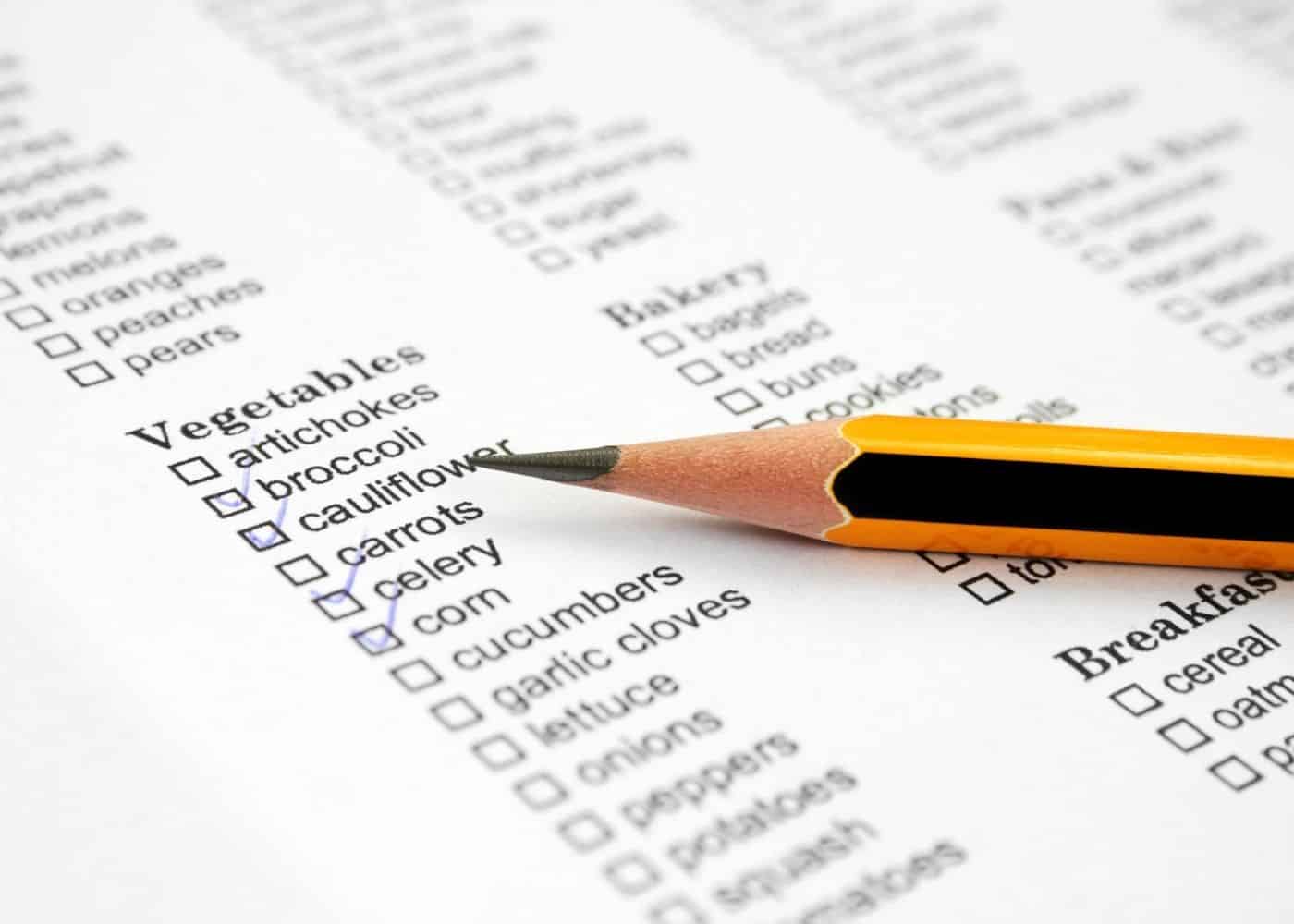
Navigating the aisles of the market can be intimidating when you're trying to eat cleaner. Grocery shopping for healthy goods doesn't need to be scary or expensive with these tips.
Choosing Healthy Foods
- Avoid packaged goods, such as chips and frozen meals. Most of these aren't nutrient-dense and they're often expensive. You'll want the majority of your diet to be fresh, whole foods you prepare yourself.
- Read your labels on packaged goods. This is especially important if you have food allergies or intolerances. In general, you'll want to reconsider anything with added sugar, preservatives, artificial coloring or flavors, and excess sodium.
- Follow a formula when shopping. Usually, you'll need similar things each time you shop. Choose a few options each for carbohydrates, healthy fats, and proteins. You can then mix and match to create meals throughout the week. See more of my meal prep tips for beginners.
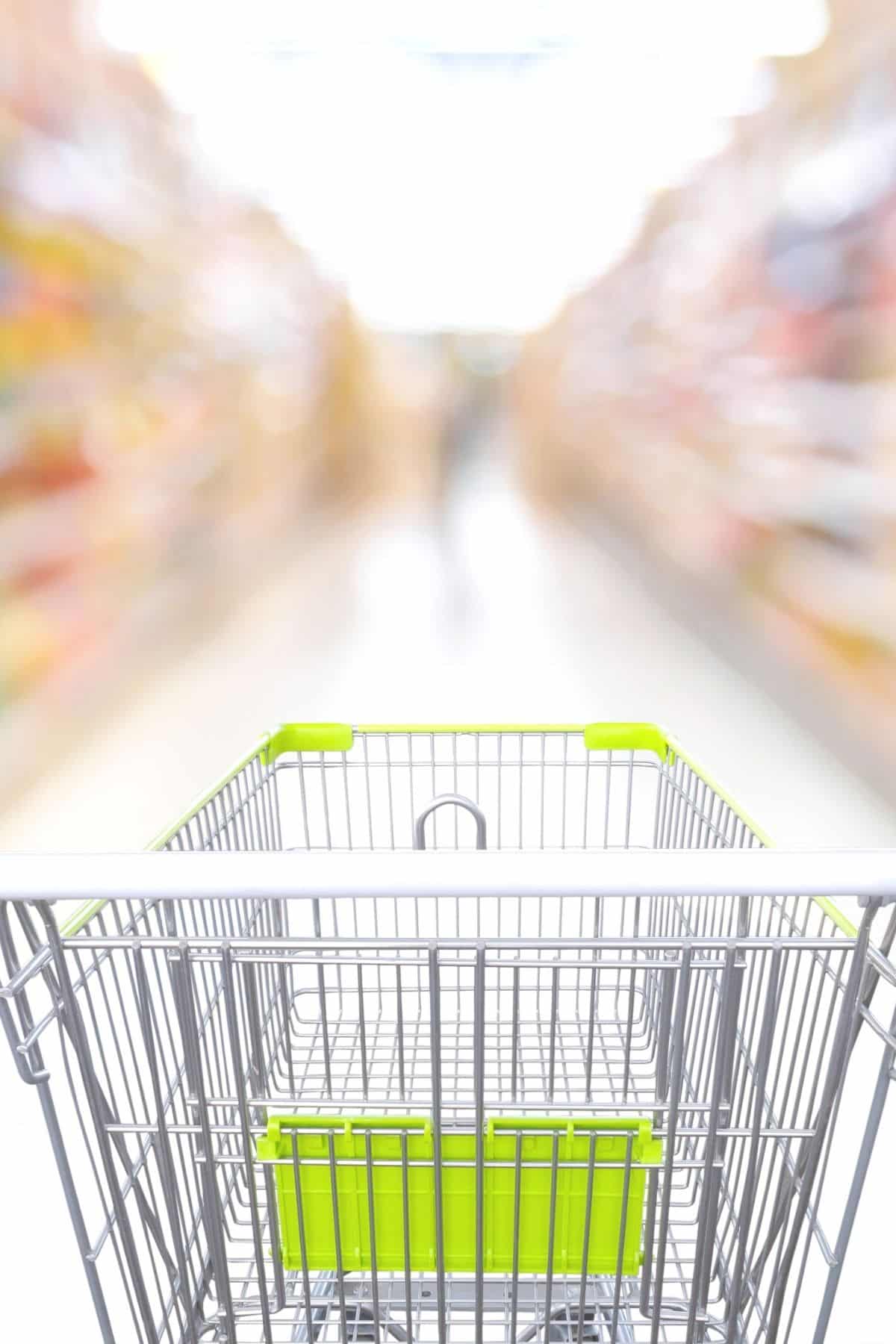
Saving Money
- Don't shop when you're hungry! It will distort your perception of what you actually need. You'll be more likely to pick up higher calorie foods (usually junk foods!) and add way more to your cart than you need.
- Meal plan and create a list. This ensures that you're only buying what you need and that you will use everything you buy rather than waste food.
- Choose conventional when you can. The upcharge on organic goods adds up, so only choose organic for the Dirty Dozen.
- Compare prices at a few different stores in your area if you have time. It's helpful to buy most of your items at the cheaper store, then head to the specialty stores only for items you can't find elsewhere.
- See all my tips for eating healthy on a budget.
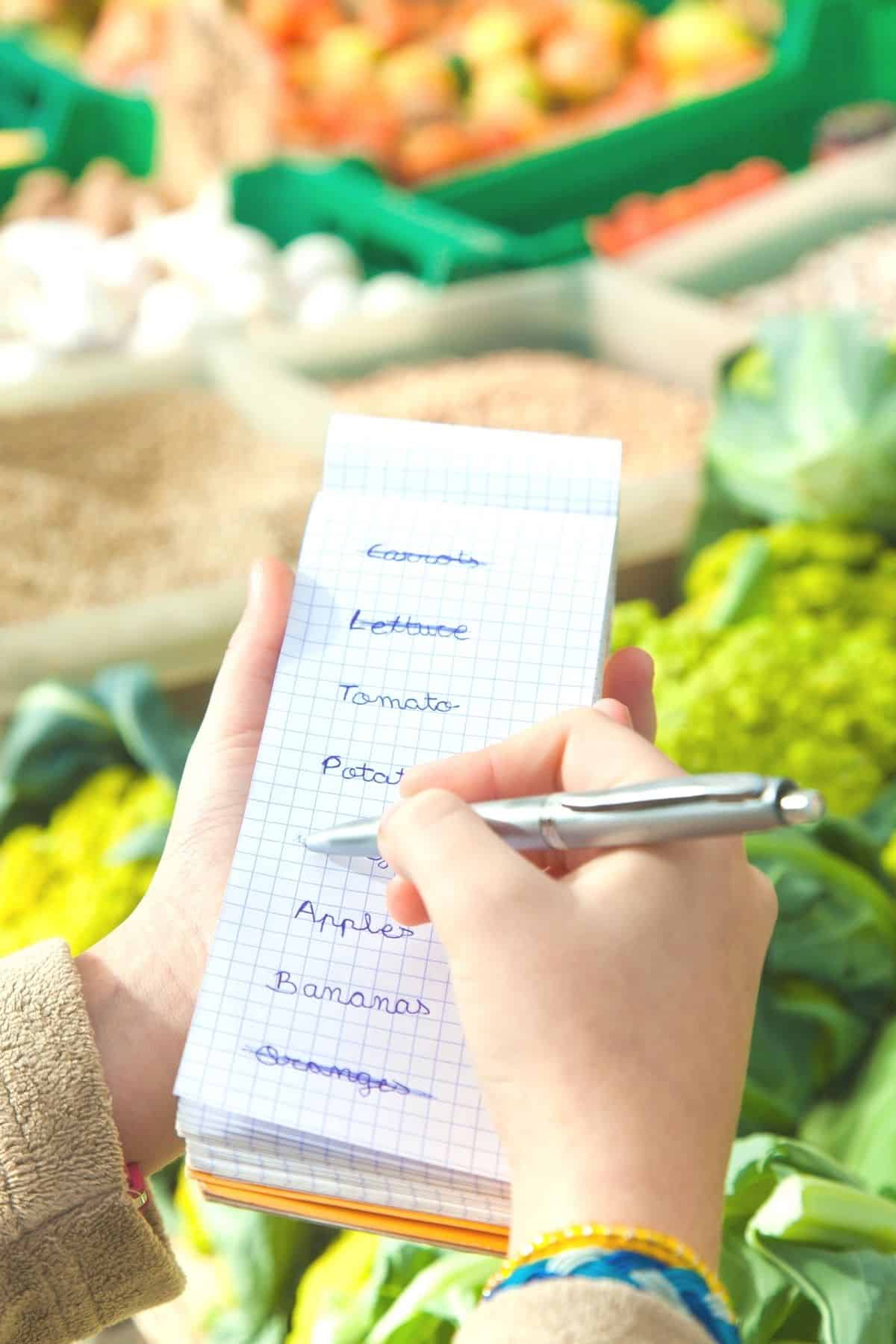
Fruits
Unless you want to, there is no need to buy all fruit organic. In general, if you eat the skin, buy organic. Conventional is safe for fruits like bananas and avocados, which have a thick skin that you remove. Check the EWG for more information on which fruits are most commonly sprayed with pesticides.
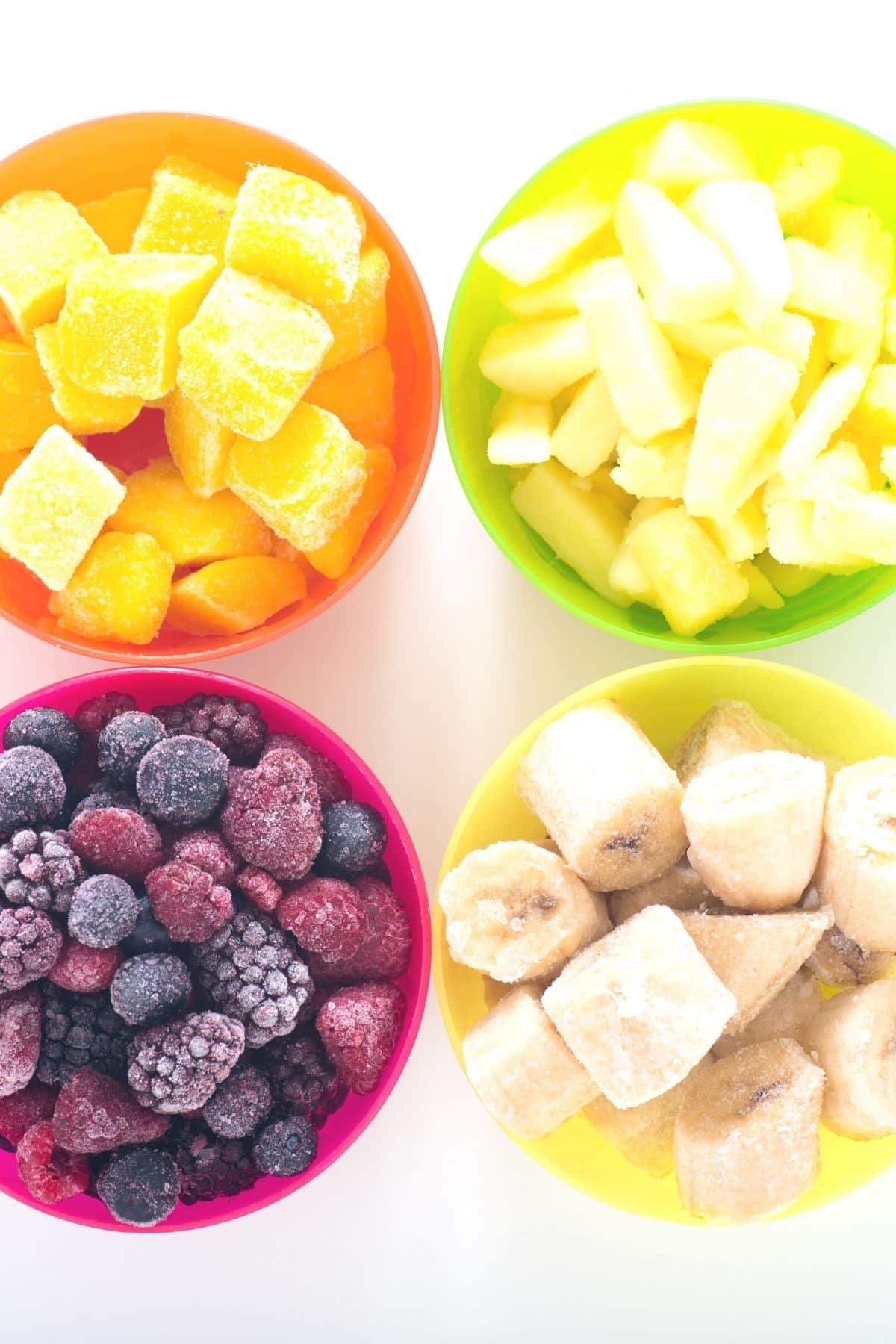
To save money, avoid pre-sliced fruits; buy in season when possible; and, purchase frozen if using in dishes like smoothies.
Here is a solid list of fruits to consider on your next grocery run:
- Apples
- Apricots
- Avocados
- Bananas
- Blackberries
- Blueberries
- Cherries
- Grapefruit
- Grapes
- Green Apples
- Kiwi
- Lemon
- Lime
- Mango
- Melons
- Nectarines
- Oranges
- Papaya
- Peaches
- Pears
- Persimmons
- Pineapples
- Pitted prunes
- Plums
- Pomegranates
- Raspberries
- Strawberries
- Tangerines
- Watermelon
Vegetables
Follow the same wisdom with vegetables when choosing organic or conventional. For example, leafy greens should be purchased organic, while root veggies like onions are safe to purchase conventional. The EWG provides a comprehensive list.
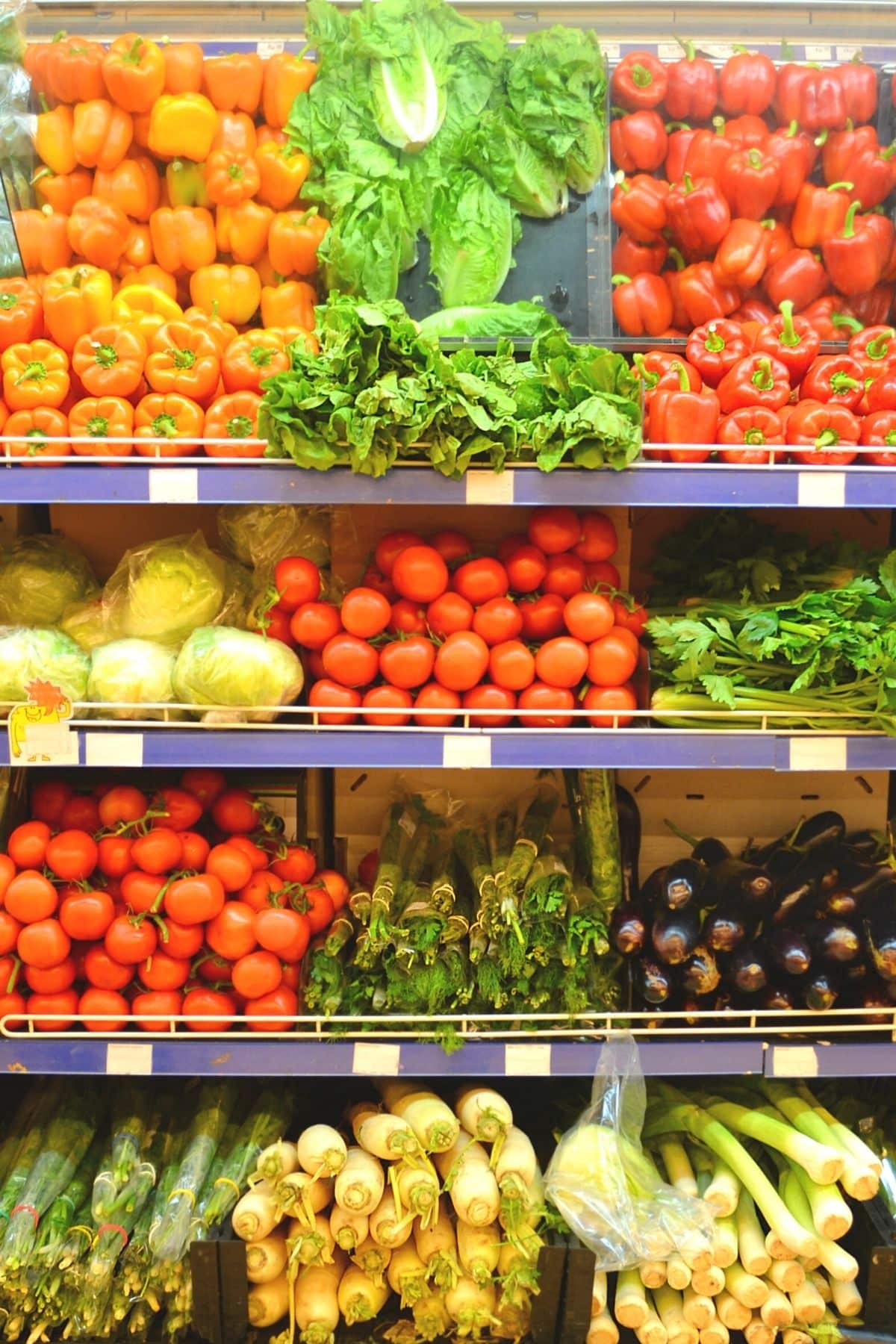
Frozen options like frozen broccoli, green beans, and butternut squash are great ways to save money. Canned options like canned pumpkin puree are also a good way to save money. Frozen vegetables are less forgiving in texture than frozen fruit, however, so budget accordingly.
Also, if you have picky eaters in the house, you might want to refer to my list of the Best Vegetables for Picky Eaters.
These vegetables are all great sources for your clean eating kitchen:
- Artichokes
- Arugula
- Asparagus
- Broccoli
- Brussel sprouts
- Butternut squash
- Cabbage
- Carrots
- Cauliflower
- Cucumbers
- Fennel
- Garlic
- Ginger
- Green beans
- Kale
- Mushrooms
- Okra
- Onions
- Peas
- Peppers
- Pumpkin
- Radishes
- Romaine lettuce
- Spaghetti squash
- Spinach
- Sweet Potatoes
- Tomatoes
- Yams
- Zucchini
Beans, peas, and legumes
Beans, peas, and legumes are often your least expensive grocery items, so stock up for plant-based dinners! Buying in bulk is a great way to save money.
Of these items, peanuts and edamame are the only ones that should really be purchased organic. Peanuts, especially, are best purchased in an organic Valencia variety to reduce mold and pesticide exposure.
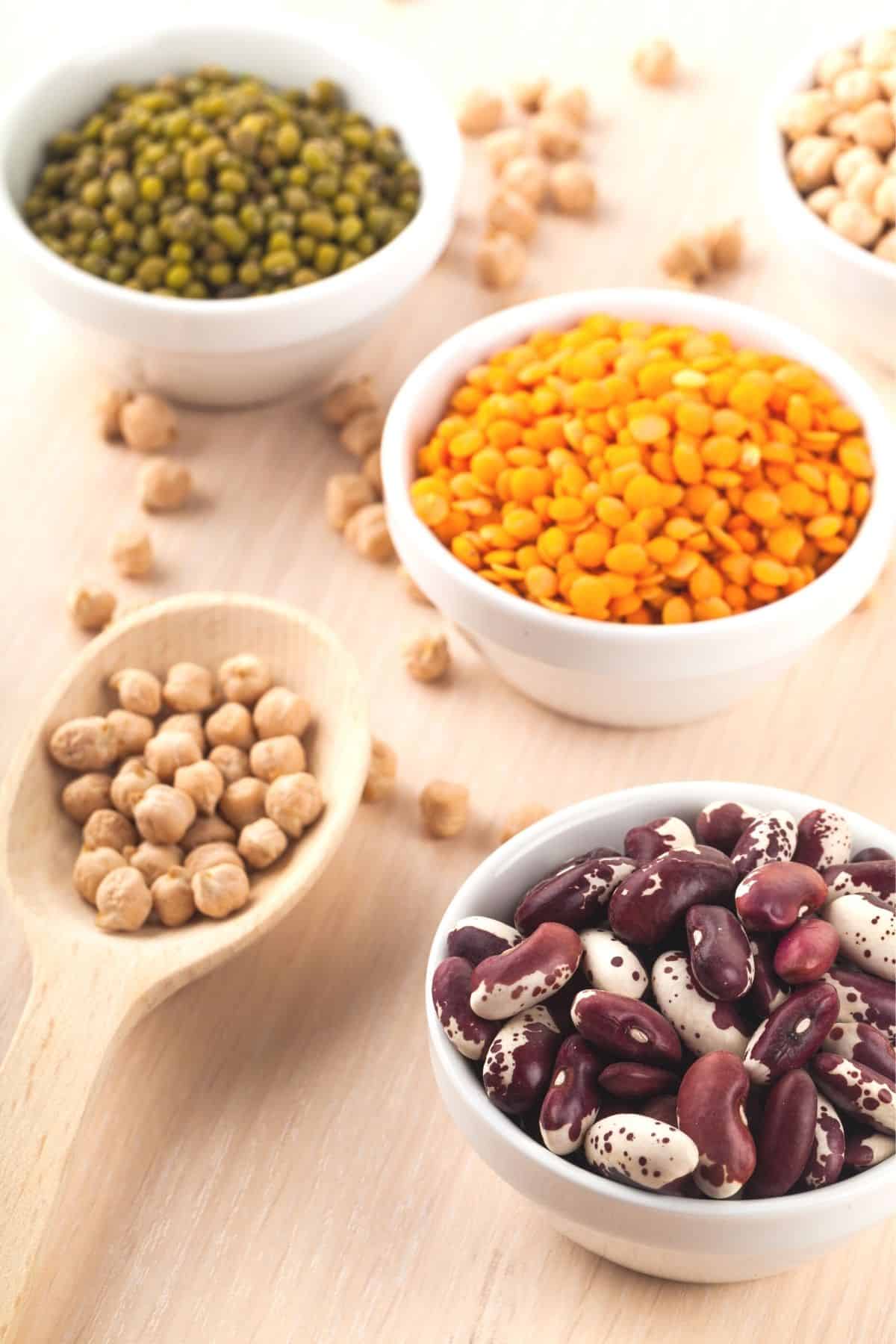
Canned, frozen, and dried varieties are great ways to buy beans and lentils. For the greatest nutrient density, search for "sprouted" varieties. These are considered easier on the digestive system and more bioavailable, though they're not necessary.
Beans, peas, and legumes to add to your grocery list:
- Adzuki beans
- Black beans
- Black-eyed peas
- Cannellini beans
- Edamame
- Garbanzo beans
- Great northern beans
- Kidney beans
- Lentils
- Mung beans
- Navy beans
- Peas
- Peanuts
- Pinto beans
- Red beans
Animal & Plant Proteins
Meat, poultry, and fish will be your most expensive grocery items, so budget accordingly and consider eating sparingly to reduce cost. It's better to have a little well-sourced meat in your diet than a lot of factory farmed meat.
Choose 100% grass-fed, grass-finished red meat. Poultry and eggs are best when pasture-raised. Choose wild game meat over farmed. Fish and shellfish should be purchased wild-caught and sustainably-sourced whenever possible.
Any soy products should be certified organic, as these are heavily genetically modified and sprayed when conventional. Learn more about the potential dangers of soy products and the safest ways to eat soy.
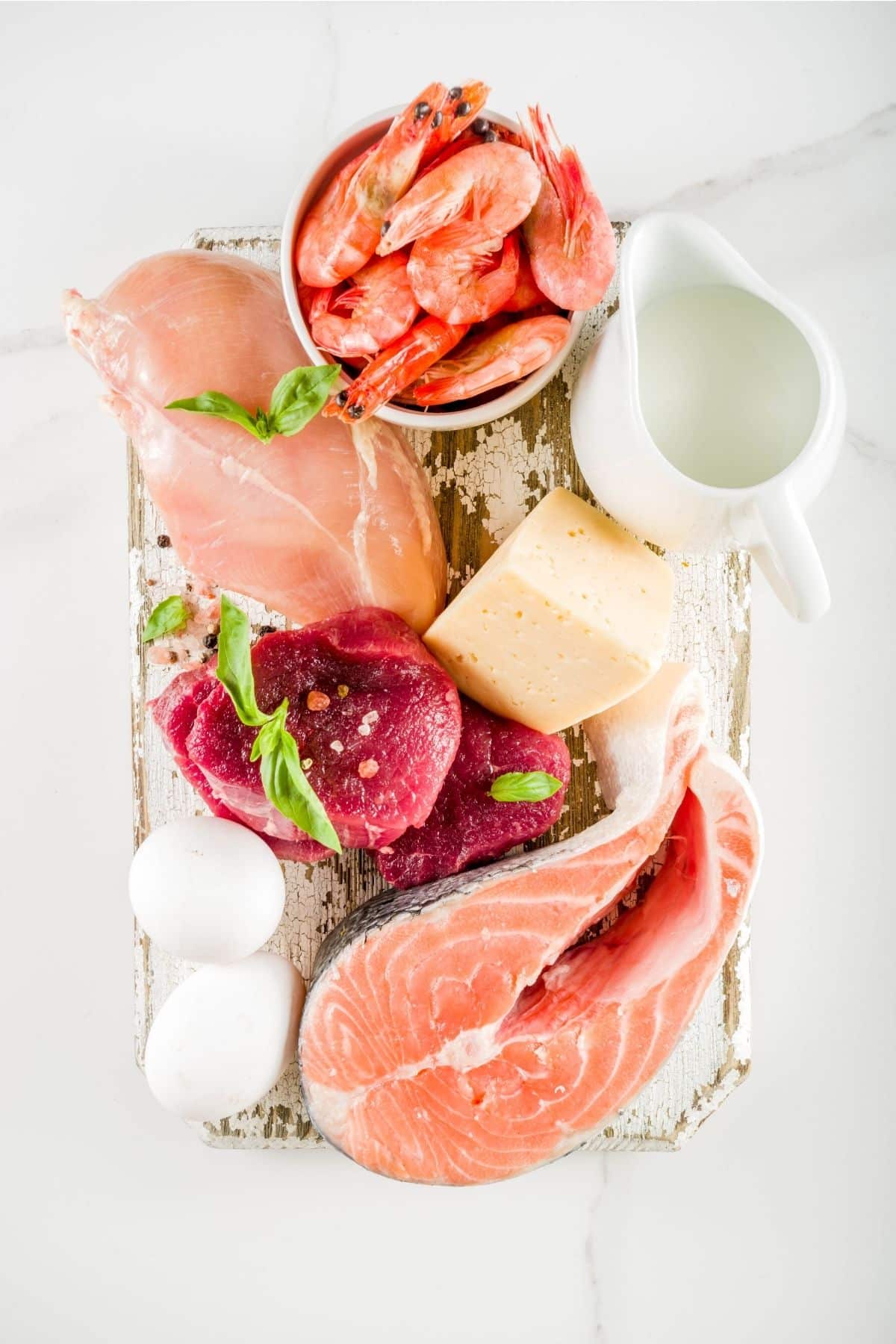
To save money, consider buying in bulk from a local source. Frozen meat and fish is also perfectly acceptable. In addition, canned fish is very affordable and nutrient-dense.
Best clean eating protein sources:
- Beef
- Bison
- Chicken
- Eggs
- Fish and shellfish
- Game meats
- Pork products including bacon
- Soy products including tofu and tempeh
- Turkey
Dairy Products & Dairy-Free Milks
Making your own dairy-free milk is a cost-effective alternative to store-bought, but if you need to purchase packaged, go for unsweetened options with as few ingredients as possible.
Conventional is safe to purchase for dairy-free milk products, except for homemade oat milk which ideally would be made with organic rolled oats.
If you choose dairy products, opt for 100% grass-fed and grass-finished whole milk to get the most nutrients.
To save money, consider using dairy-free milk as your daily milk rather than dairy milk. It typically has a much longer life in your refrigerator than dairy does. Save dairy for cheese and yogurt, which is more forgiving with food safety. You might also want to learn about the health reasons to go dairy-free.
Dairy and dairy-free milk options:
- Almond milk
- Coconut milk and coconut beverage
- Hemp milk
- Kefir
- Milk
- Rice milk
- Soy milk
- Yogurt
Gluten-free Grains & Pseudograins
You should purchase these staples organic whenever possible, as they tend to have higher pesticide residues. Look for rice grown in California or India, if possible, for lower arsenic levels.
As with legumes, consider purchasing sprouted varieties of these grains for better bioavailability. Alternatively, sprout or soak them yourself before cooking. If you are gluten-free, be sure to purchase options that are certified gluten-free to avoid cross-contamination. Learn more about the reasons to consider going gluten-free.
List of gluten-free grains to consider purchasing:
- Amaranth
- Buckwheat
- Corn
- Millet
- Oats
- Quinoa
- Rice
- Sorghum
- Teff
- Wild rice
If you're not gluten-free, you can consider adding other gluten-containing grains to your shopping list including:
- Barley
- Rye
- Wheat berries
- Spelt
If you're looking for healthy bread alternatives, please do check out my full article on that topic.
Nuts & Seeds
Nuts and seeds are generally safe to purchase conventional, though you may choose to budget for organic to be safer. As with grains and legumes, sprouted is best, but not necessary!
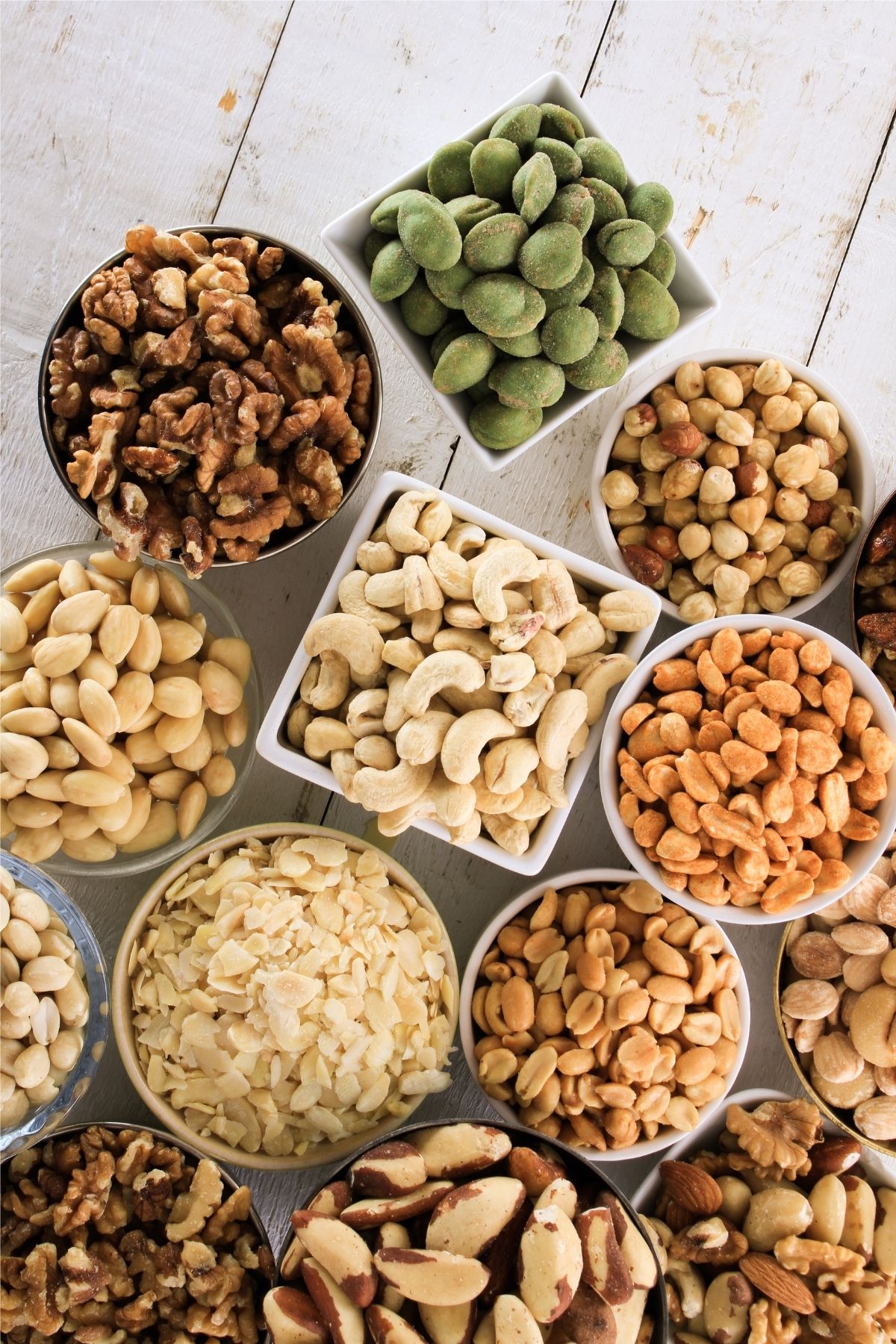
To save money, store your nuts and seeds in glass containers in your refrigerator. They tend to go rancid quickly, so the cold environment can prolong their shelf lives.
Clean eating nuts and seeds:
- Almonds
- Brazil Nuts
- Cashews
- Chia seeds
- Flax seeds
- Hazelnuts
- Hemp seeds
- Macadamia nuts
- Pecans
- Pistachios
- Pumpkin seeds
- Sunflower seeds
- Walnuts
Baking Supplies
Unless you are baking daily, there's not much need to buy your baking supplies organic. Consider choosing dark chocolate chips to reduce sugar, raw cacao for more nutrients, and local raw honey for the most health benefits.
Sweeteners:
- Blackstrap Molasses
- Coconut Palm Sugar
- Maple Syrup
- Honey
Flours:
- Almond flour
- Cassava flour
- Coconut flour
- Gluten-free baking flour
- Paleo baking flour mix
- Tapioca flour
Other baking basics:
- Baking soda
- Baking powder
- Cocoa powder
- Chocolate chips
Fat Sources
Most oils are fine to purchase conventional. Be wary of excessively cheap oils; liquid oils like olive oil and avocado oil should always be sold in dark glass bottles to avoid rancidity.
It's best to spend your money on high-quality oils, preferably grown in California or imported from Italy or Greece.

Choose 100% grass-fed, grass-finished ghee and butter, and pasture-raised lard.
Healthy fat sources to consider including in your kitchen:
- Avocado oil
- Coconut oil
- Ghee
- Grass-fed butter
- Lard
- Olive oil
- Sesame oil
- Walnut oil
Dried herbs & spices
Spices are pretty pesticide-heavy, so choose organic if you use them often. You can also save money by drying herbs yourself, from leftovers.
Dried herbs and spices to stock up on:
- Basil
- Bay Leaves
- Cayenne Pepper
- Cilantro
- Cinnamon
- Coriander
- Cumin
- Dill
- Garlic Powder
- Mint
- Mustard Seed
- Nutmeg
- Onion Powder
- Oregano
- Paprika
- Parsley
- Pepper
- Rosemary
- Sage
- Sea Salt
- Thyme
- Turmeric
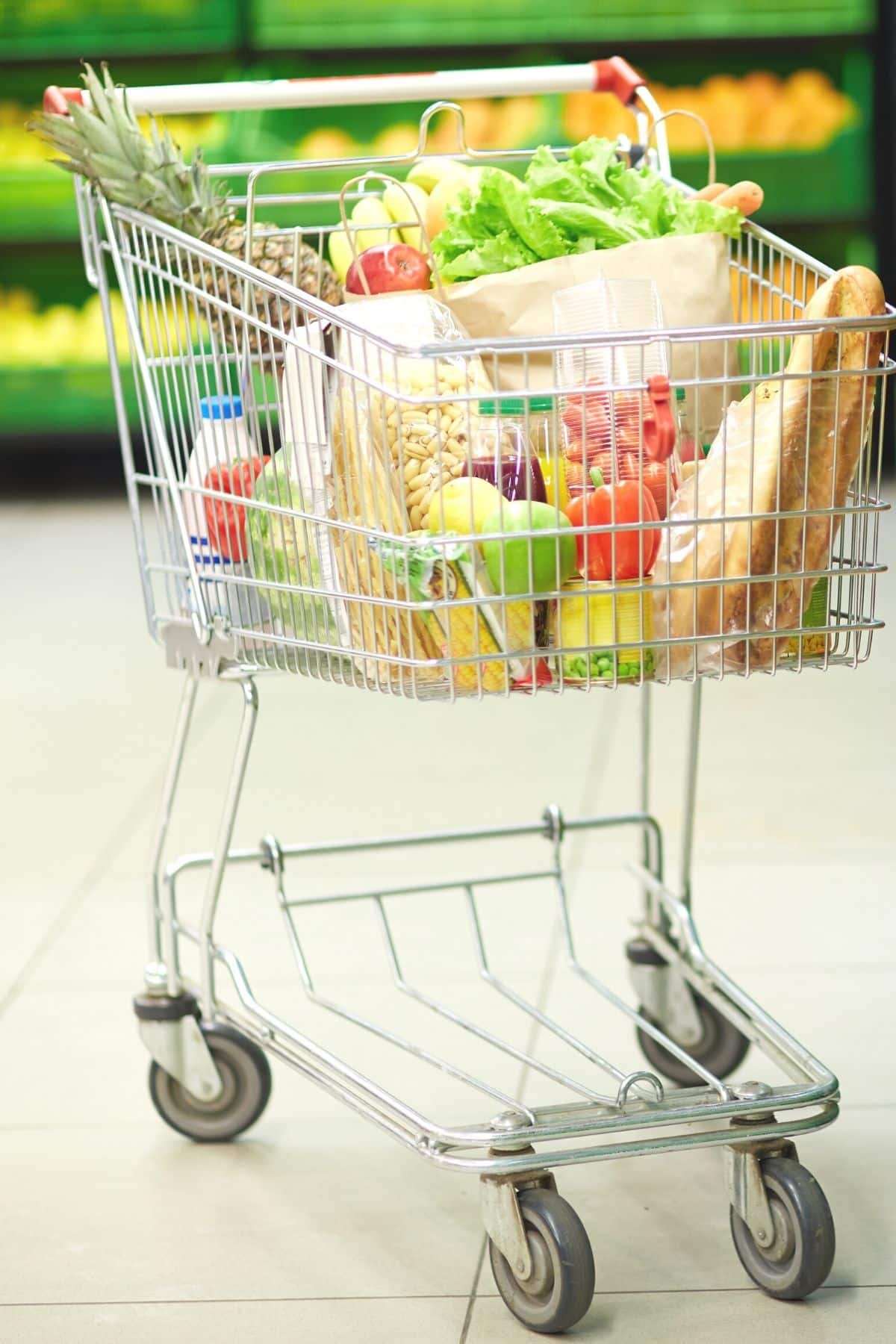
Other Pantry Staples
Choose organic pantry staples with as few ingredients as possible. Steer clear of added sugars, preservatives, oils, or sodium.
Clean eating pantry staples:
- Balsamic vinegar
- Apple cider vinegar
- Coconut aminos
- Soy sauce or tamari (reduced-sodium)
- Hot sauce
- Mustard
- Ketchup
- Marinara sauce
- Nut or seed butters
- Dates
- Gluten-free or grain-free pasta
Snacks
Packaged snacks will quickly eat up your budget, so use them sparingly. Be sure to read your labels to avoid any sneaky added sugar, undesirable oils, or questionable preservatives. Just like with pantry staples, choose snacks with simple ingredients. Organic doesn't need to be a priority with these, as you're not eating them often.
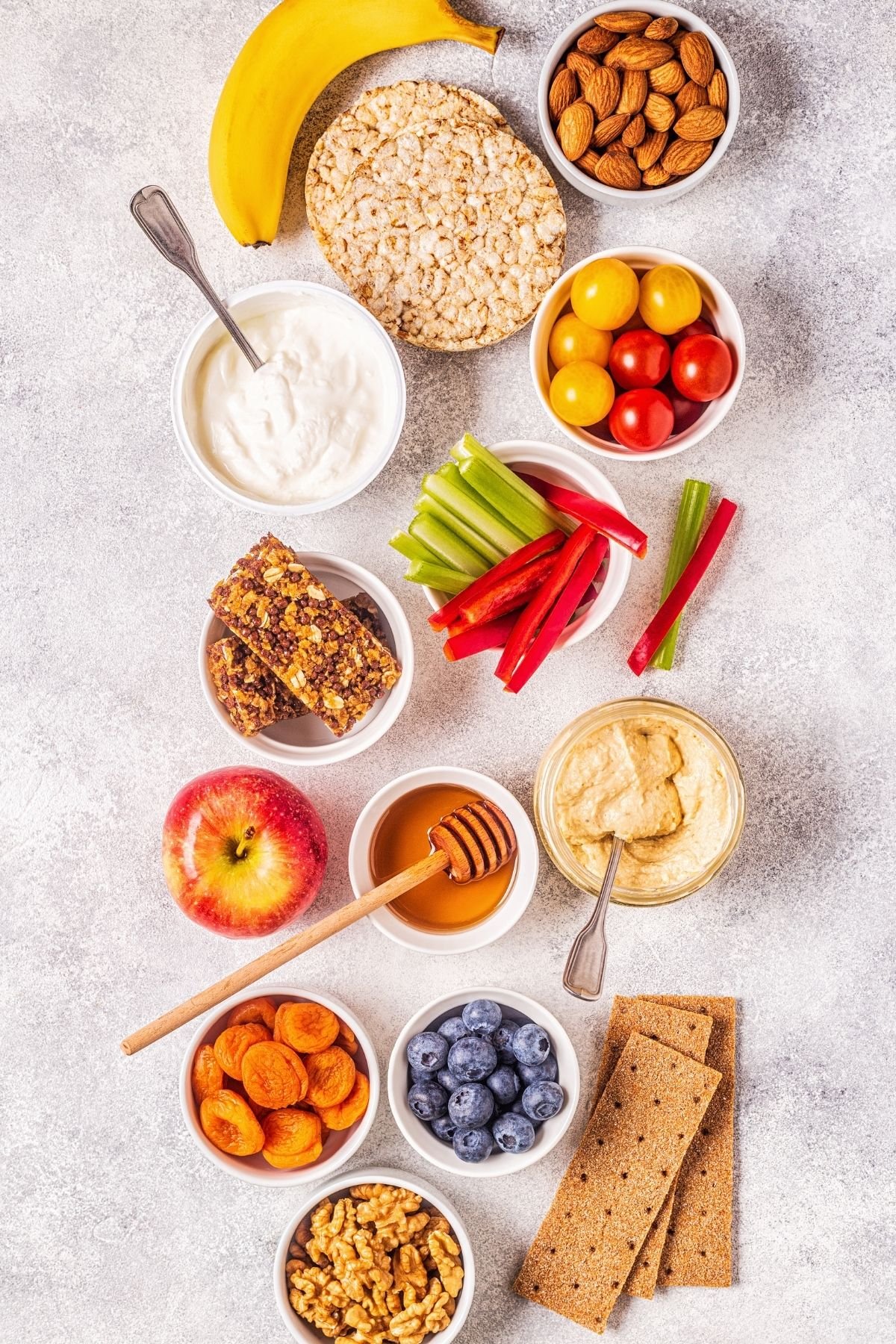
To save money, check out store brands over name brands. Be sure to read your labels to compare, but often, store brands have similar ingredients and are less expensive.
If you prefer to make your own clean eating snacks at home, check out my complete list of the best gluten-free and dairy-free snacks.
Clean eating snacks to consider:
- Crackers
- Dark chocolate
- Dried fruit
- Dried seaweed
- Gluten-free wraps, breads, or baked goods
- Hummus
- Nut and seed butters
- Popcorn
- Salsa
- Grain-free or gluten-free crackers
Conclusions
This comprehensive list of clean eating food and pantry staples is designed to help you with your grocery shopping. Always choose unprocessed, whole foods over packaged and highly-processed foods. With this list, you'll be set on stocking your personal clean eating kitchen!
If you want a PDF printable version of this shopping list, be sure to sign up for my email list and Clean Eating Quick Start Guide! Or, you can also pin this image.

You might also want to check out my 5-Ingredient Clean Eating Recipes E-book for simple recipes. The book includes two weeks of meal plans and shopping lists to help make your life easier.
If you like this post, consider following me on social media so we can stay connected. I'm on Facebook, Pinterest, Instagram, and YouTube!
Note: this post is for informational purposes only and is not intended as medical advice. Please consult your healthcare provider for recommendations related to your individual situation.
This post may contain affiliate links which won't change your price but will share some commission. We are participant in the Amazon Services LLC Associates Program, an affiliate advertising program designed to provide a means for us to earn fees by linking to Amazon.com and affiliated sites.
Source: https://www.cleaneatingkitchen.com/clean-eating-food-list/